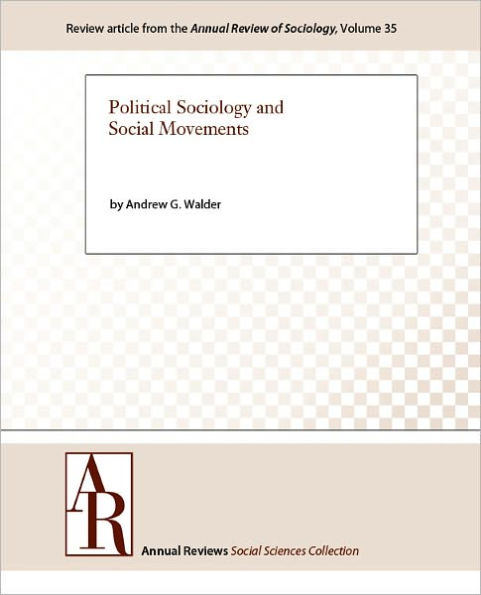Political Sociology and Social Movements
Until the 1970s, the study of social movements was firmly within a diverse sociological tradition that explored the relationship between social structure and political behavior, and was preoccupied with explaining variation in the political orientation of movements: their ideologies, aims, motivations, or propensities for violence. Subsequently, a breakaway tradition redefined the central problem, radically narrowing the scope of interest to the process of mobilization—how social groups, whoever they are and whatever their aims, marshal resources, recruit adherents, and navigate political environments in order to grow and succeed. Critics would later insist that the construction of meaning, the formation of collective identities, and the stimulation and amplification of emotions play vital and neglected roles in mobilization, but these alternatives did not challenge the narrowed construction of the problem itself. The resulting subfield has largely abandoned the quest to explain variation in the political orientation of movements. Researchers in related fields—on revolution, unions, and ethnic mobilization—have retained an interest in explaining political orientation, although they often view it primarily as a by-product of mobilization. Reviving theories about the impact of social structure on movement political orientation will require integrating insights from research on related but widely scattered subjects.
"1105834549"
Political Sociology and Social Movements
Until the 1970s, the study of social movements was firmly within a diverse sociological tradition that explored the relationship between social structure and political behavior, and was preoccupied with explaining variation in the political orientation of movements: their ideologies, aims, motivations, or propensities for violence. Subsequently, a breakaway tradition redefined the central problem, radically narrowing the scope of interest to the process of mobilization—how social groups, whoever they are and whatever their aims, marshal resources, recruit adherents, and navigate political environments in order to grow and succeed. Critics would later insist that the construction of meaning, the formation of collective identities, and the stimulation and amplification of emotions play vital and neglected roles in mobilization, but these alternatives did not challenge the narrowed construction of the problem itself. The resulting subfield has largely abandoned the quest to explain variation in the political orientation of movements. Researchers in related fields—on revolution, unions, and ethnic mobilization—have retained an interest in explaining political orientation, although they often view it primarily as a by-product of mobilization. Reviving theories about the impact of social structure on movement political orientation will require integrating insights from research on related but widely scattered subjects.
9.99
In Stock
5
1

Political Sociology and Social Movements
19
Political Sociology and Social Movements
19eBook
$9.99
Related collections and offers
9.99
In Stock

Product Details
| BN ID: | 2940013424180 |
|---|---|
| Publisher: | Annual Reviews |
| Publication date: | 09/15/2011 |
| Series: | Annual Review of Sociology , #35 |
| Sold by: | Barnes & Noble |
| Format: | eBook |
| Pages: | 19 |
| File size: | 6 MB |
From the B&N Reads Blog
